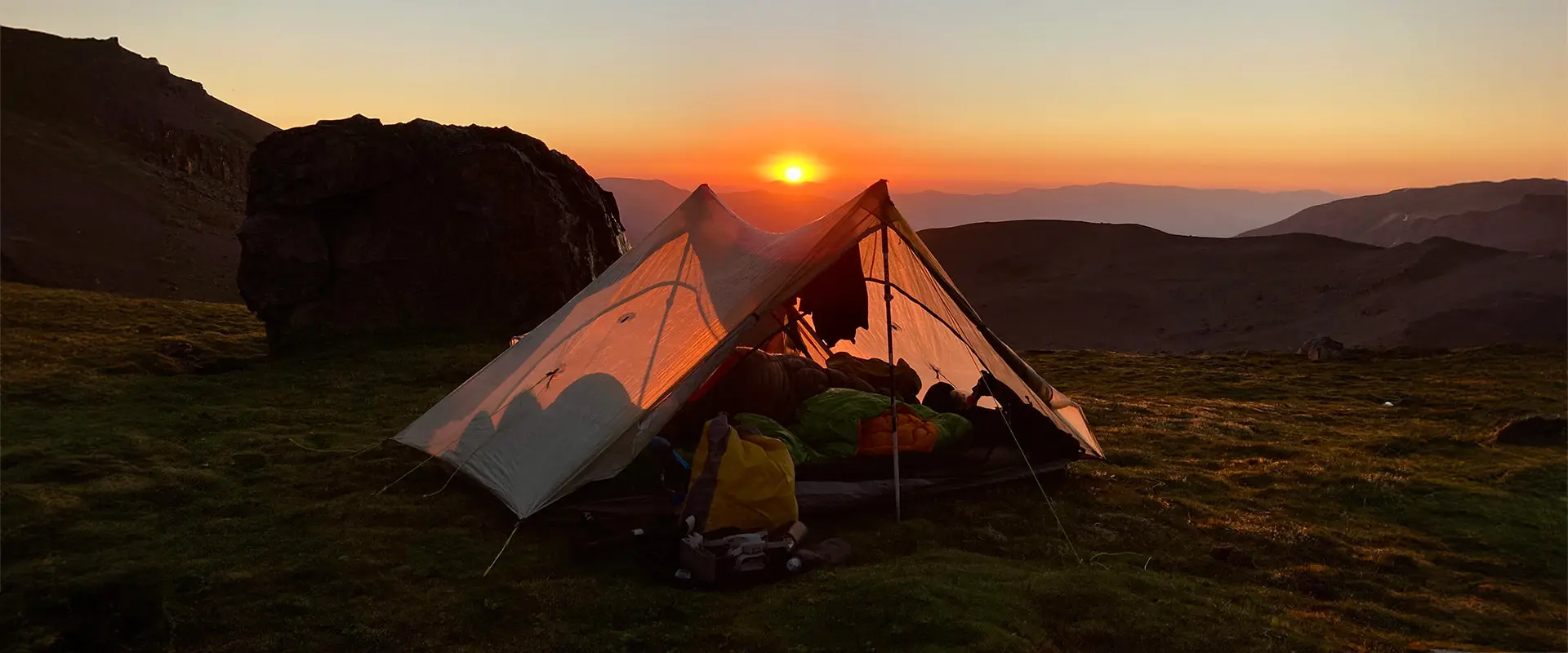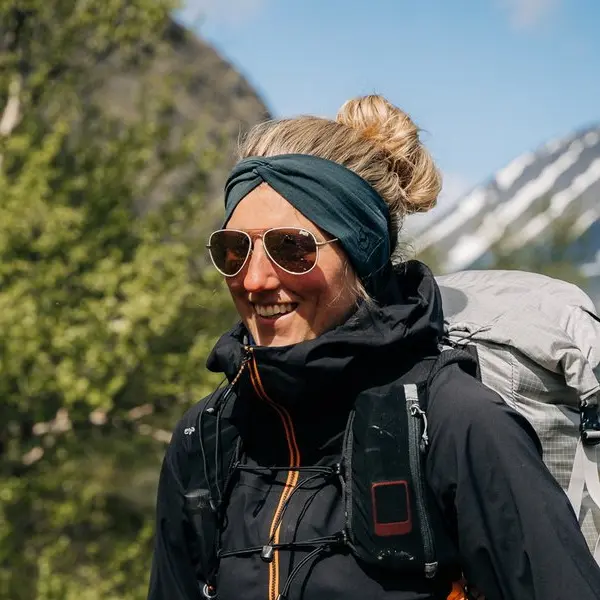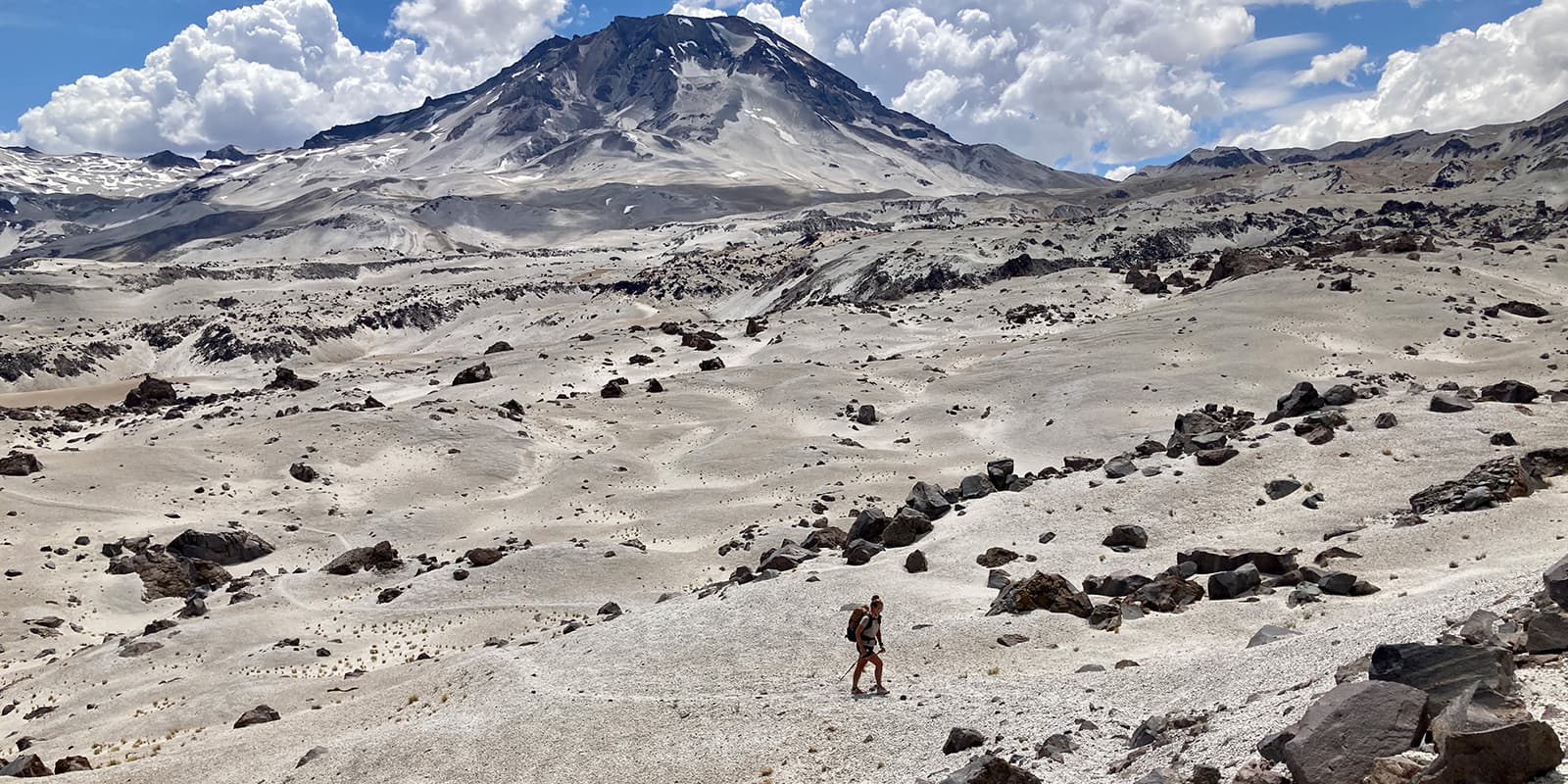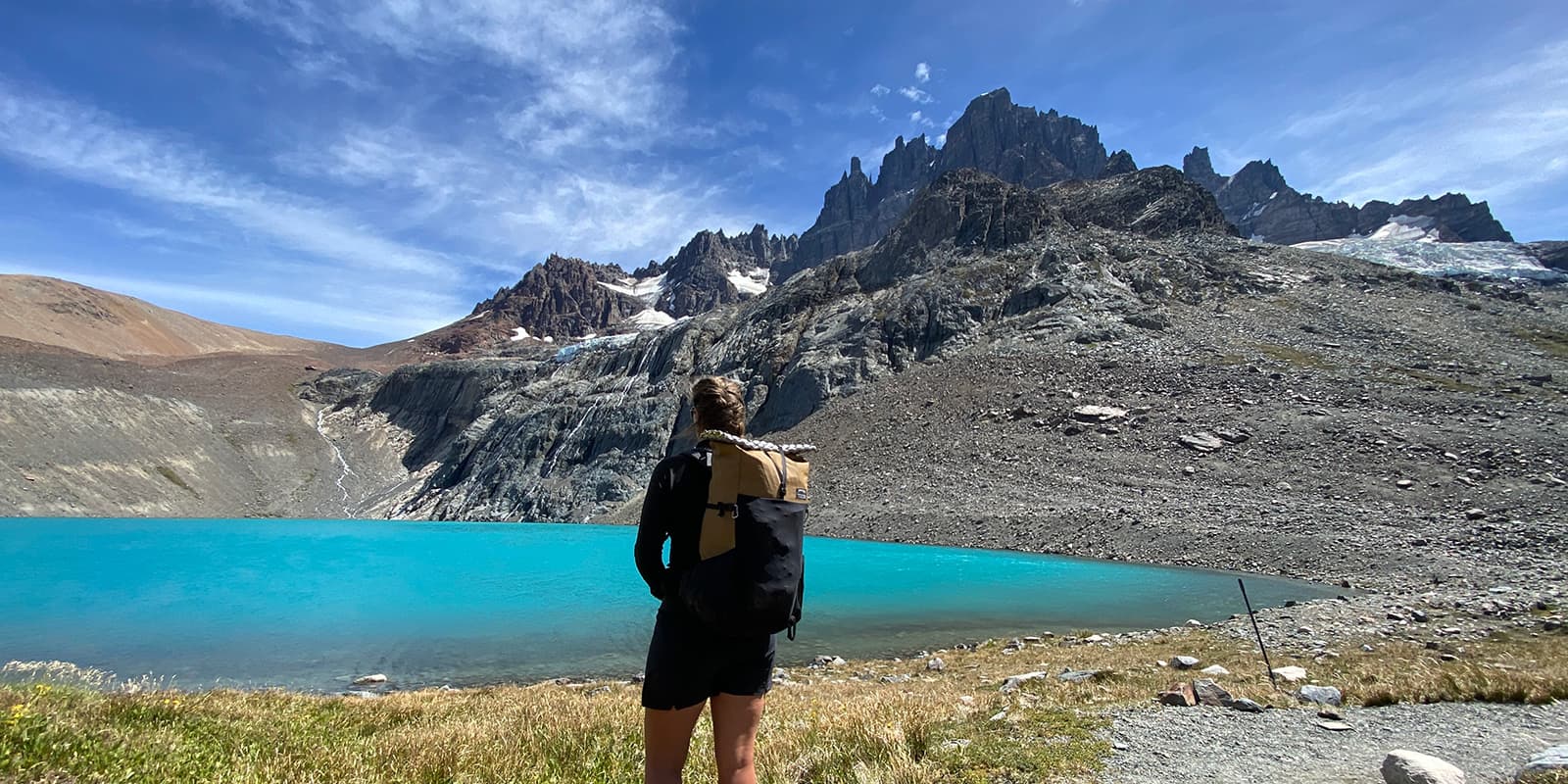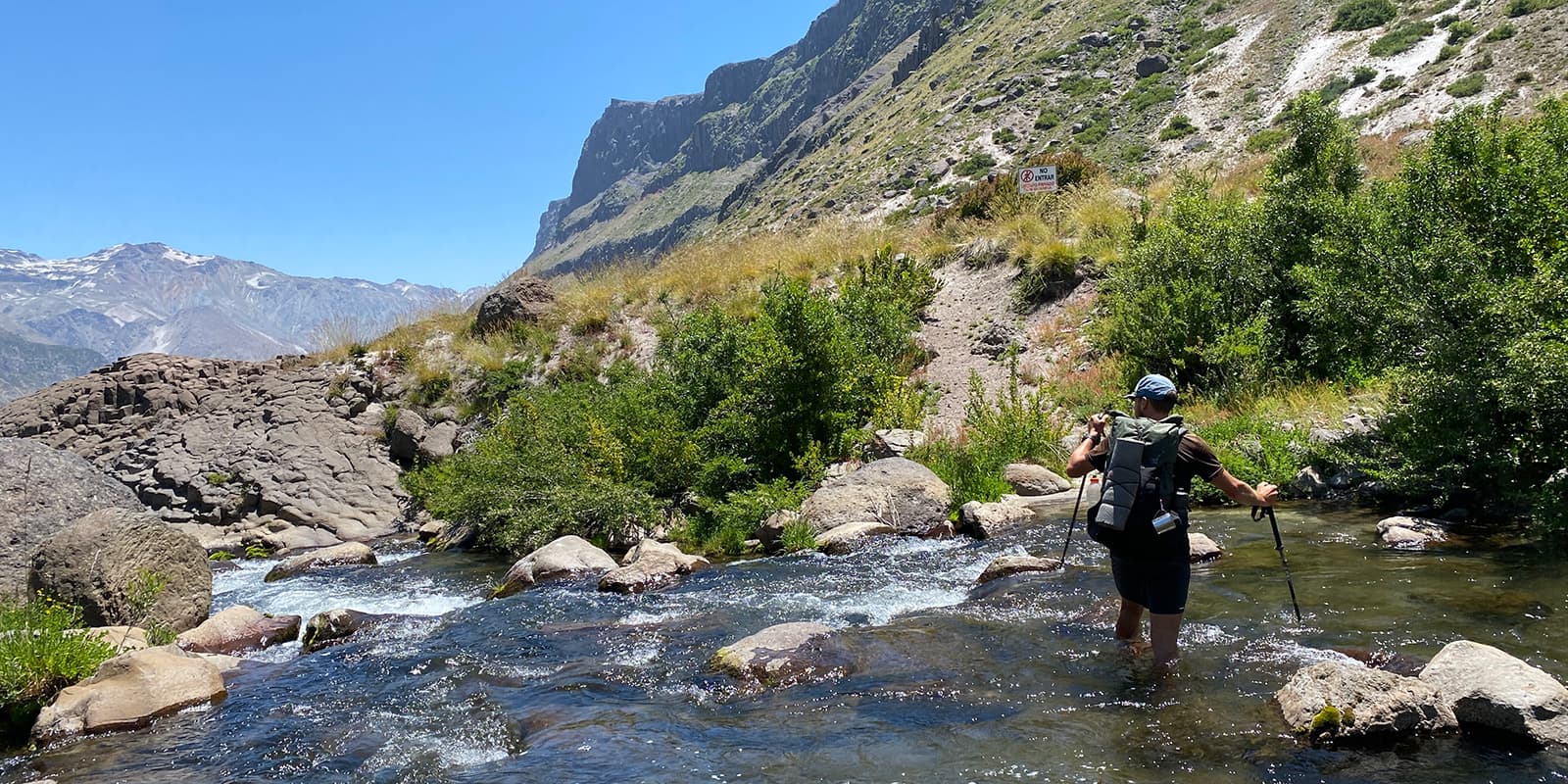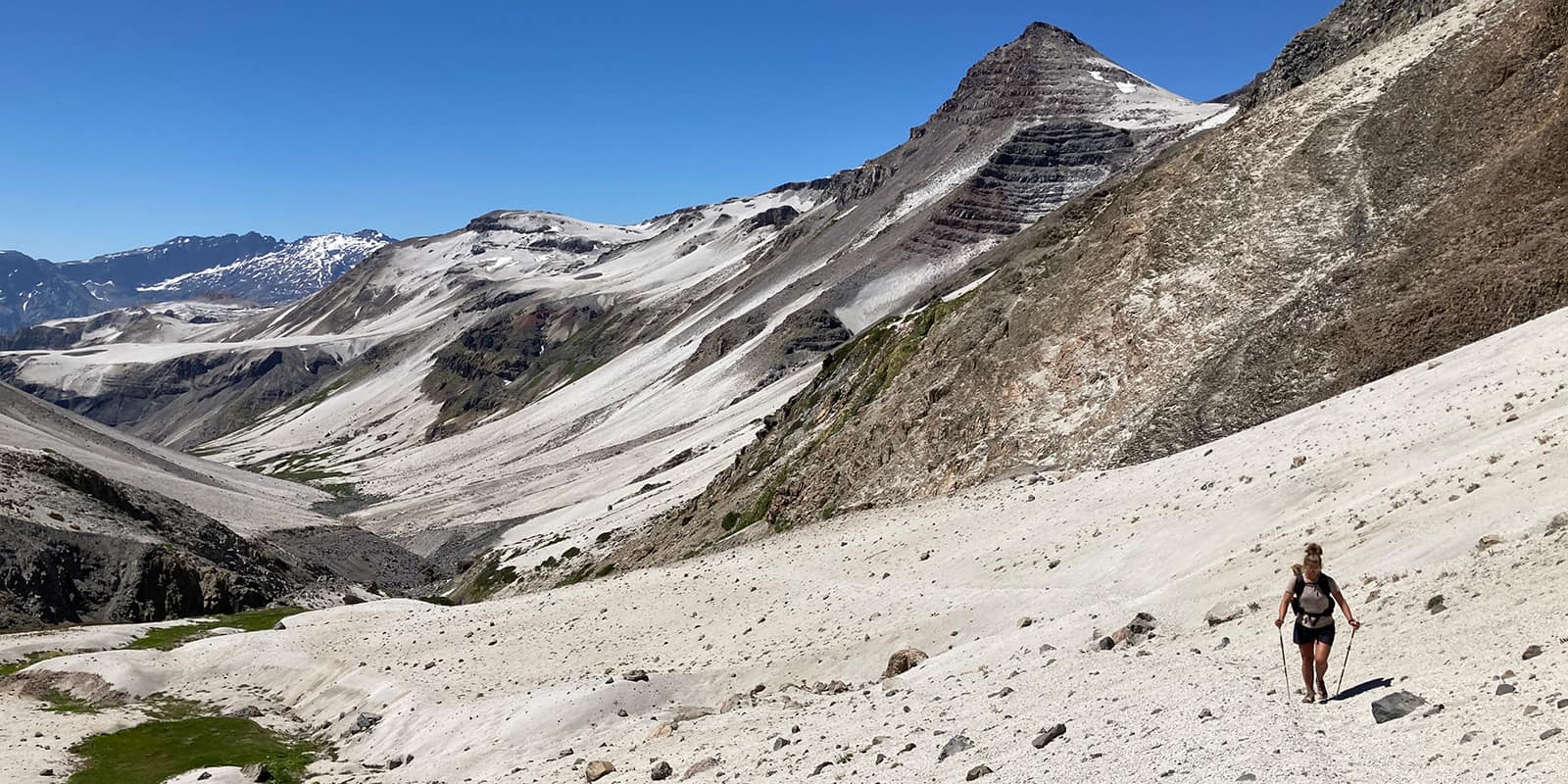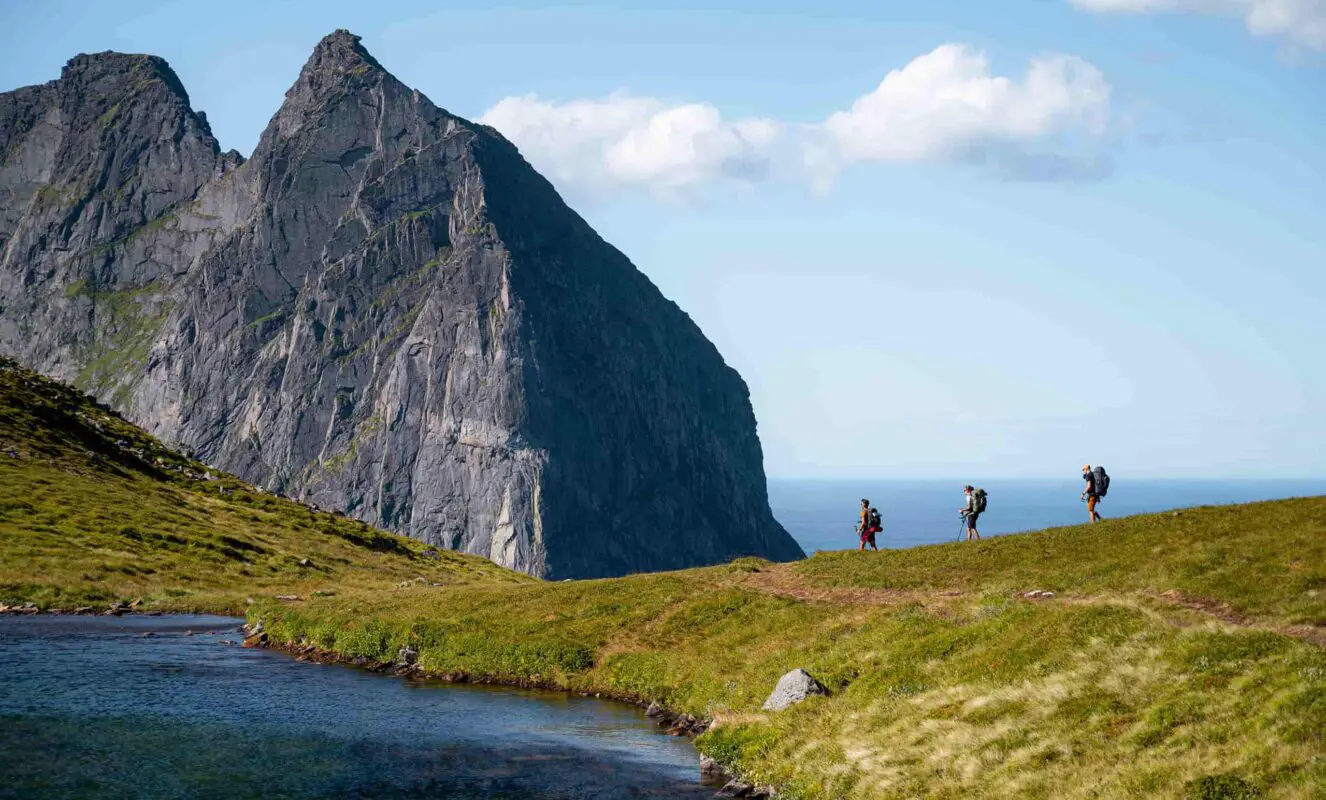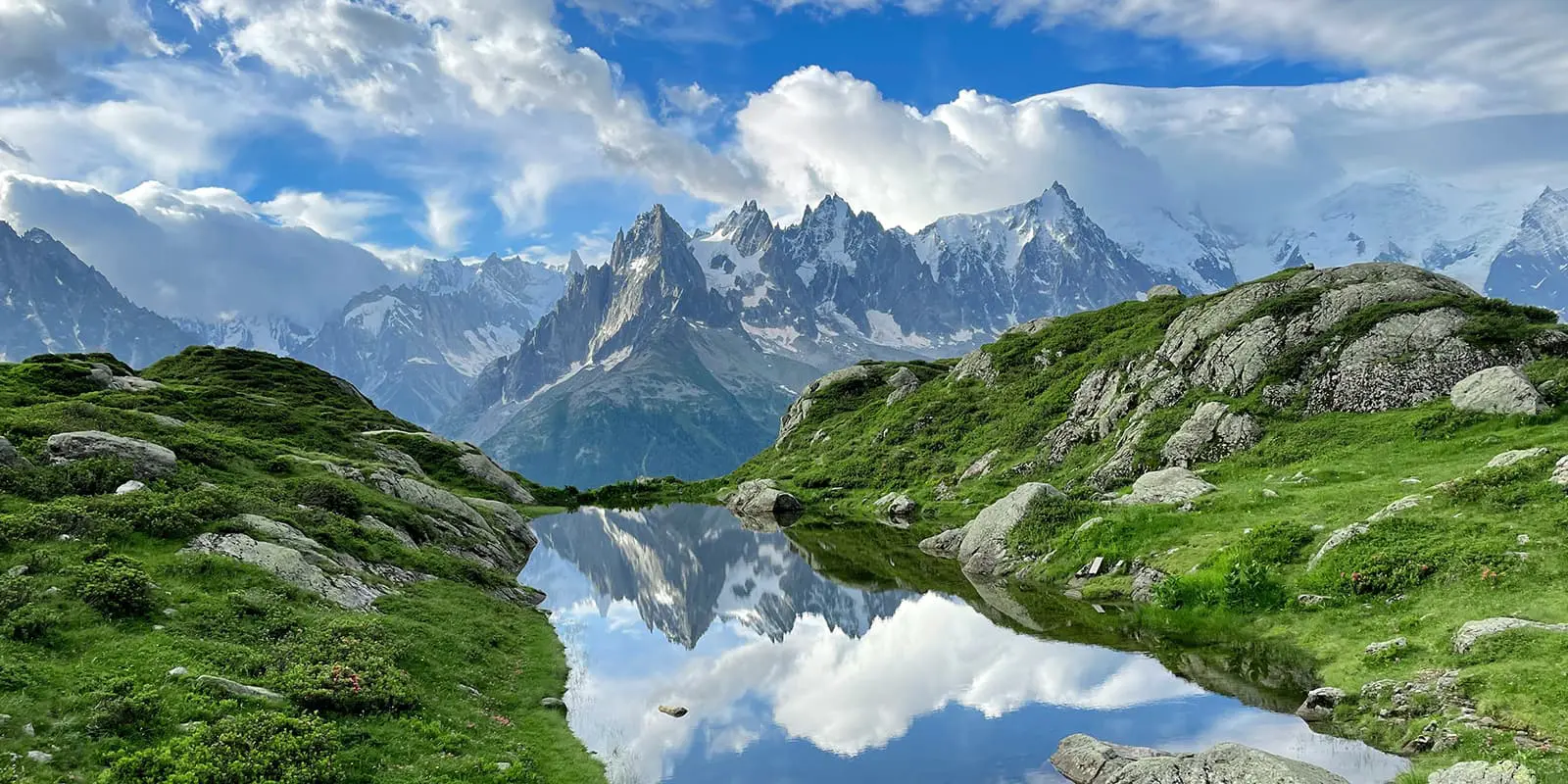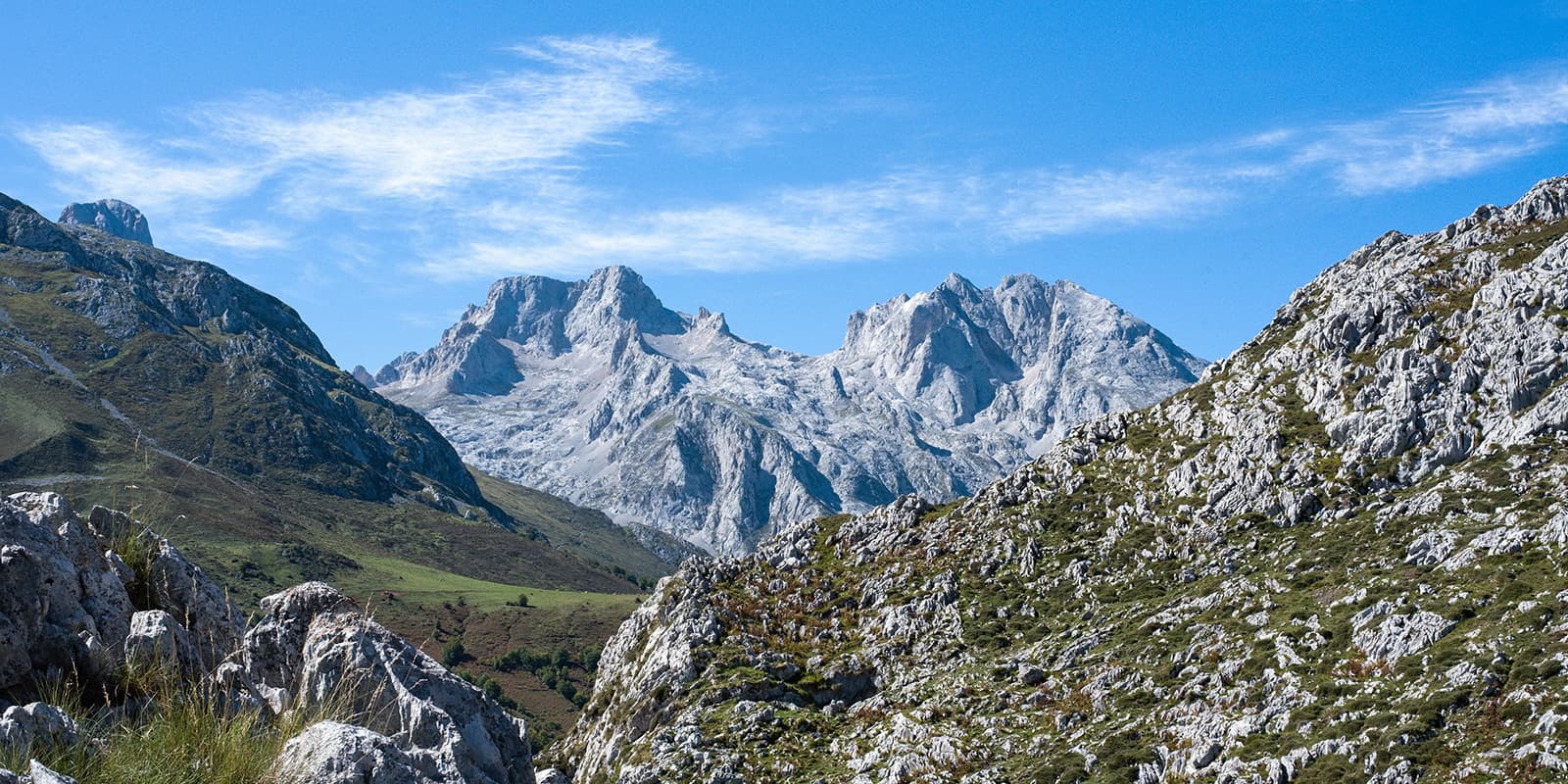First, acquaint yourself with the route. The GPT isn’t a single, well-marked path but a network of trails and routes that require navigation skills. Study detailed maps and guidebooks, and consider investing in a GPS device with preloaded tracks. You’ll also want to have a strong knowledge of Spanish as you navigate through people’s land.
Patagonian weather is famously unpredictable, with sudden shifts from sunshine to snow, even in summer. Bring layered clothing to adapt to changing temperatures, including a waterproof jacket, thermal layers, and a warm hat and gloves. High-quality, durable hiking boots are going to be very helpful for navigating rocky paths and muddy forest floors.
Your gear should also include a sturdy tent and a reliable sleeping bag rated for cold temperatures. Patagonia’s strong winds can be relentless, so check that your tent is designed to withstand harsh conditions. A lightweight cooking stove and enough fuel are necessary since resupply points are few and far between. Plan your meals carefully, focusing on high-calorie, non-perishable items.
Water sources are generally plentiful, but they may not always be safe to drink. Carry a water filter or purification tablets to ensure you have access to clean water. It’s wise to always have a couple of liters on hand, especially during stretches where streams and rivers are low.
Communication in this remote area can be challenging. A satellite phone or an emergency beacon can be lifesavers, providing a way to call for help if needed. Inform someone of your itinerary and check in regularly if possible.
Lastly, respect the local environment and communities. Patagonia is home to diverse wildlife and fragile ecosystems. Follow Leave No Trace principles by packing out all trash and minimizing your impact on the land. Be considerate of local customs and practices, particularly when passing through private lands or indigenous territories.



